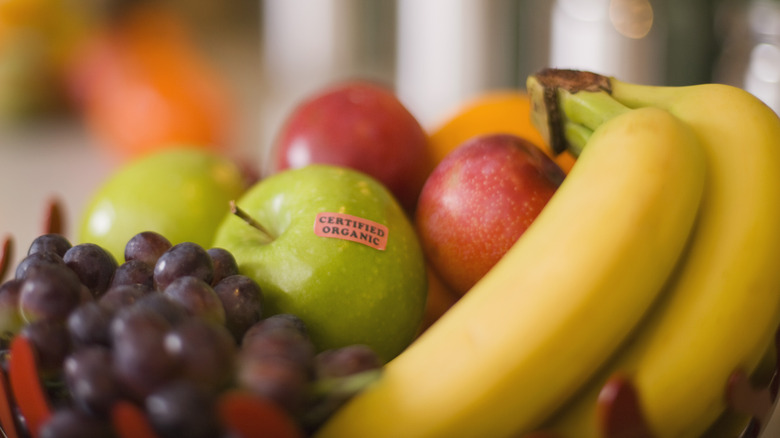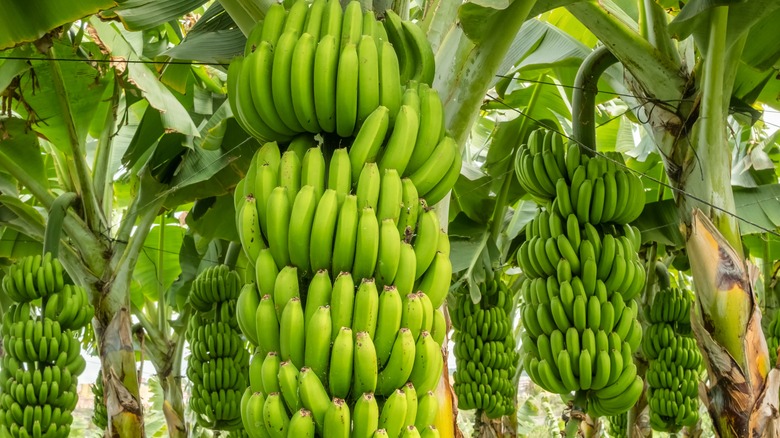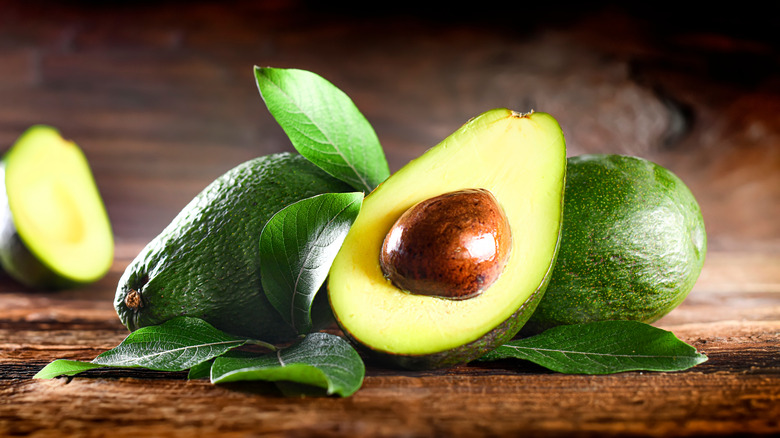The Science Behind Why Some Fruits Ripen After Picking And Some Don't
You certainly know ripe fruit when you see (and eat) it: Its skin is darker and flesh softer, there's a tantalizing smell, and the taste is sweeter and more expressive of its fruity essence. For this singular pleasure, you can thank a gaseous plant hormone called ethylene, which (together with other factors) induces the ripening process. You might also have noticed that some fruits (bananas, avocados, peaches, and the like) continue to ripen when you bring them home, while others (strawberries, blueberries, oranges, and so on) start to lose their freshness. This is because, at least from a ripening perspective, there are only two kinds of fruit: Climacteric, which will continue ripening after harvest, and non-climacteric, which won't.
In other words, if you (or your food producer) don't pick the ripest strawberries, blueberries, grapes, or cherries, there's nothing more you can do about it. They're non-climacteric and as soft and sweet as they'll get until it's compost time. Conversely, the reason you often see green bananas and rock-hard avocados in the store is that they're climacteric fruits; they need to survive commercial transportation and will ripen in your home (although maybe not necessarily on your timeline).
The chemical breakdown of the ripening process
Life is both poetic and banal. A tomato can be both voluptuous and a little round hormone and enzyme factory; a strawberry can be simultaneously succulent and a fleshy, seed-filled plant ovary. No matter how your imagination is sparked by eating a magnificent bowl of cherries, it's handy to know the science behind the poetry. Ethylene controls the ripening process, but what is that exactly? It is the increase of plant proteins called enzymes, particularly amylase and pectinase.
Amylase is what makes fruit sweet by converting starches into simple sugars. Pectinase makes fruit soft by breaking down pectin, the substance that makes unripe avocados so impenetrable. Other enzymes influence color changes that signal ripeness, going from green-but-still-safe-to-eat banana to a ripe yellow. While this process is consistent among all fruits, their ethylene production isn't. That's why some will ripen on your counter while others mold out in your fridge.
Knowing when your fruit will be ripe
Non-climacteric fruits must ripen on the vine, bush, or tree. This is because their ethylene production doesn't change after harvest, and their respiration (the process by which sugars and oxygen are converted into water, carbon dioxide, and heat) basically flatlines. This is why your strawberries don't get any redder or your oranges any ... oranger. The same goes for watermelons and pineapples: Pick the ripest ones you can at the grocery store because that's what you're gonna eat.
Conversely, climacteric fruits are called autocatalytic, which means they actually produce a burst of ethylene production and respiration after harvest. The more ethylene they produce, the stronger the signal to make more of it. Eventually, climacteric fruit respiration will decrease, but its ethylene production won't. This is how bananas go from green to yellow to spotty to "perfect for pudding." Once you know that your mangoes and kiwis are going to ripen after you bring them home, you can choose them based on when you'll need to use them (or hurry the process by employing the reliable banana-and-paper bag ripening trick).


